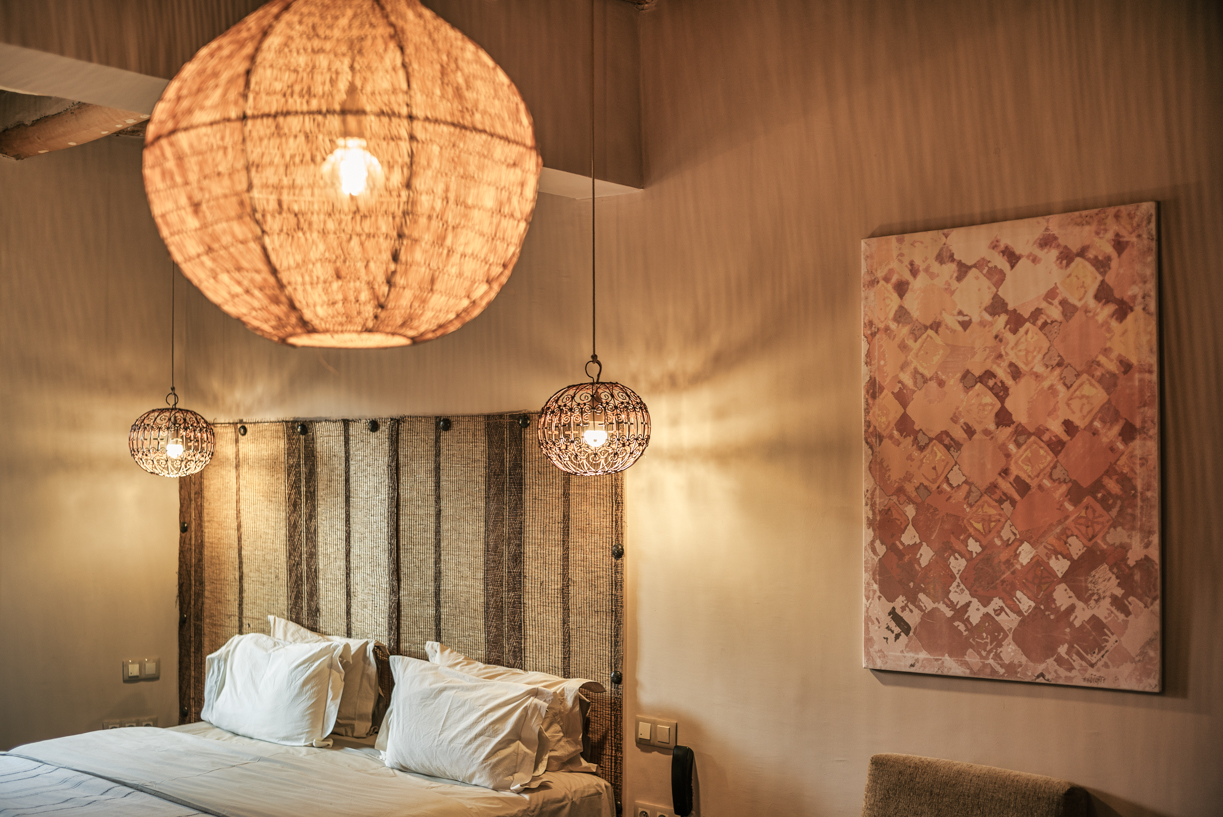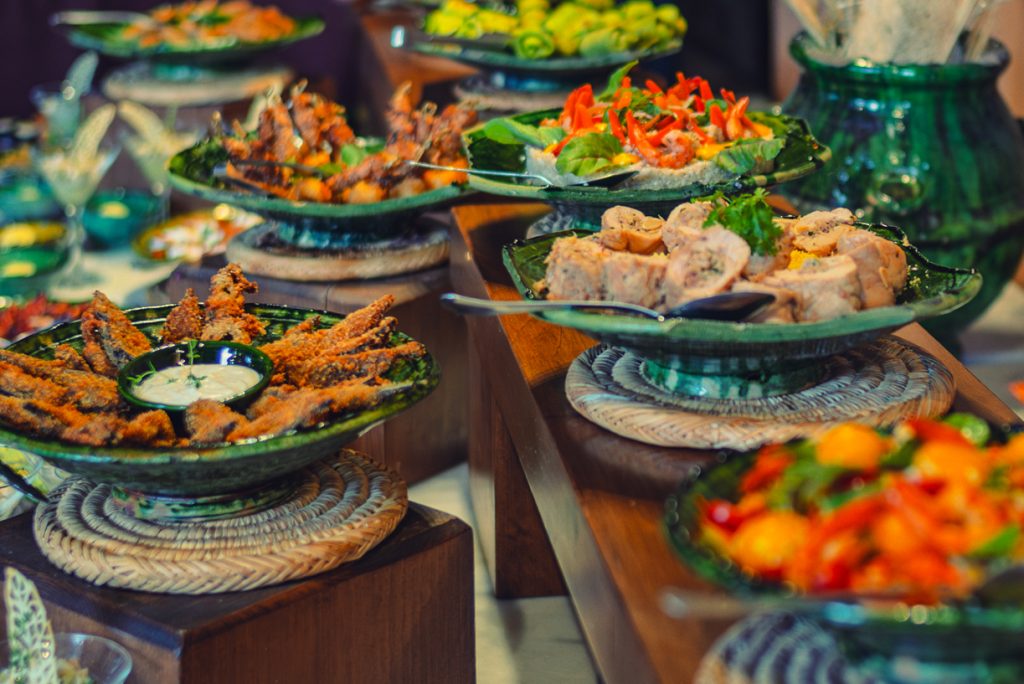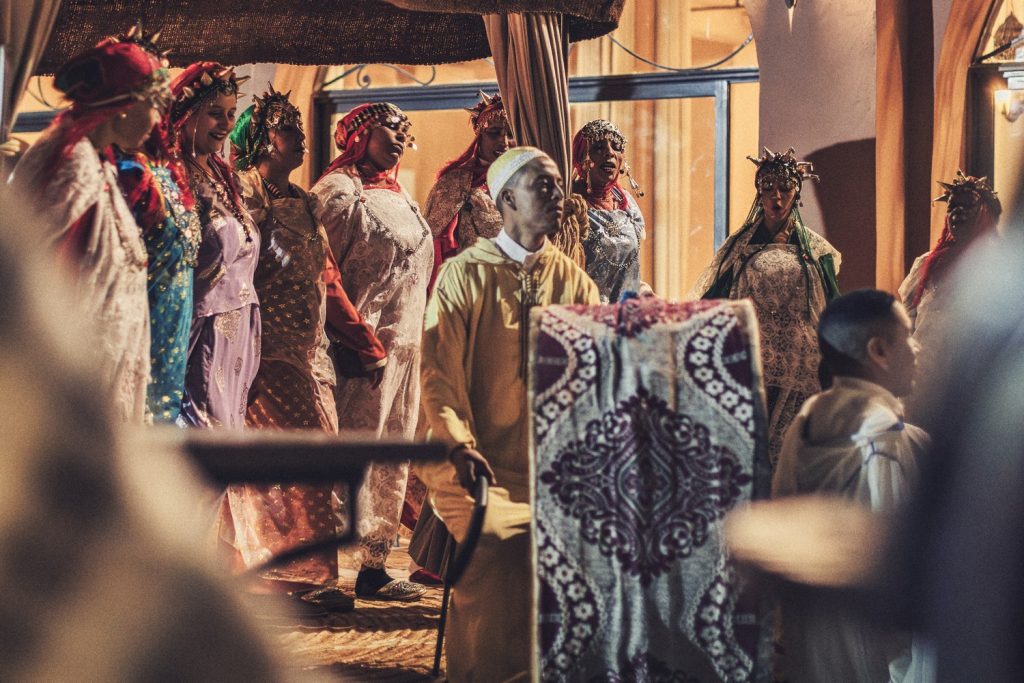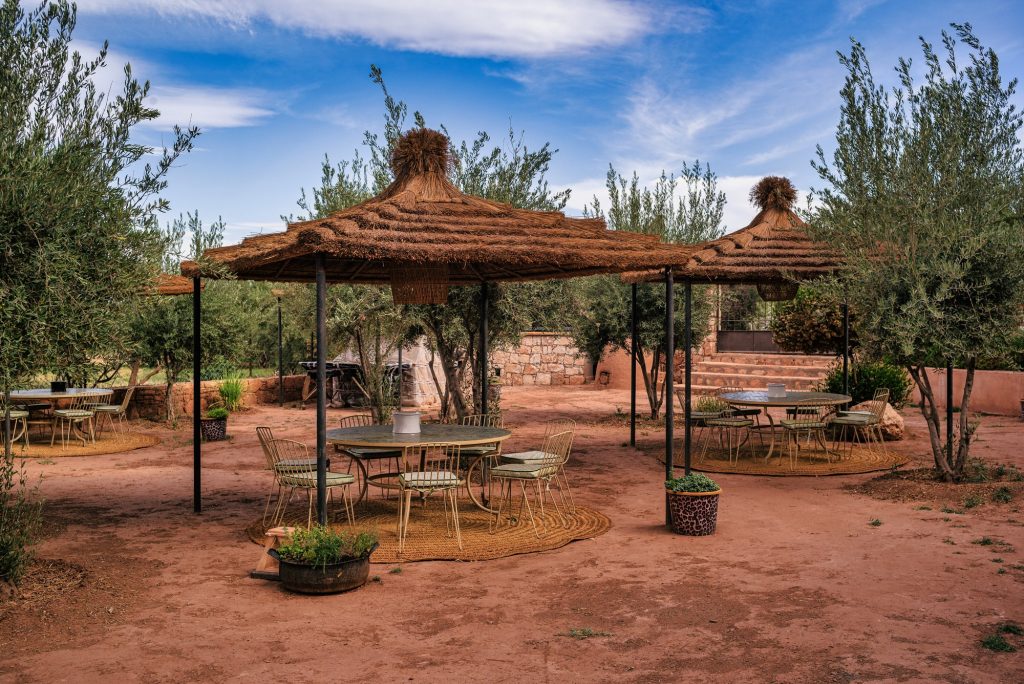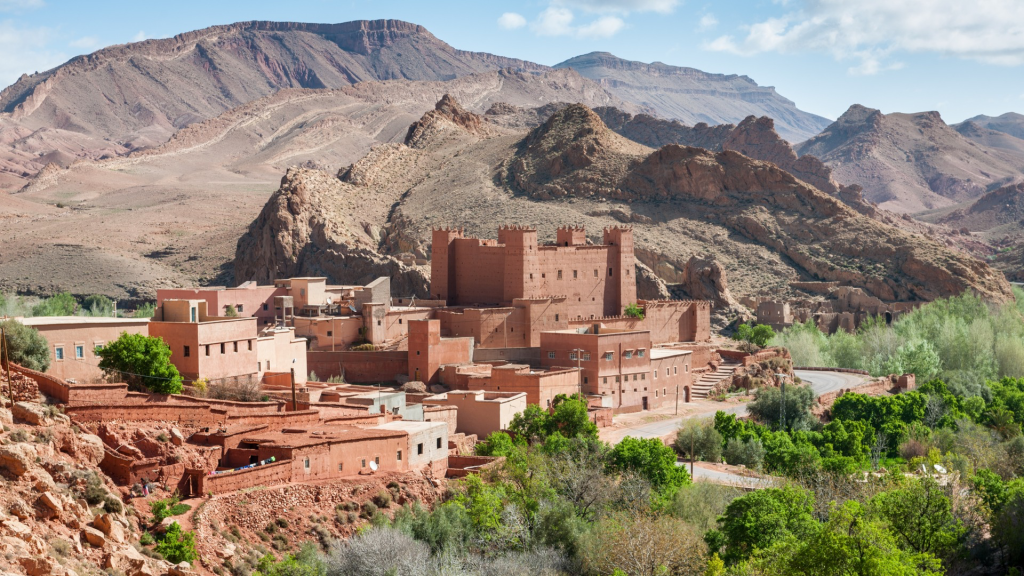
Aït Ben-Haddou
Located 3 km from Ksar Ighnda, the village is a group of earthen buildings surrounded by walls. ksarThis is a traditional type of pre-Saharan dwelling. The houses are grouped together inside defensive walls reinforced by corner towers. Some of these dwellings appear to be small castles, with their high towers decorated with mud-brick motifs. The oldest buildings date back to the 17th century.e century. The site is said to have been one of the many trading posts on the trade route between Saharan Africa and Marrakesh - you can still see a fondouk (caravanserai).
All around this douar a group of villages come together. At the foot of the hill flows the oued Maleh, whose name means "salty river". The water is unfit to drink because it is so high in salt.
The inhabitants of these douars are for the most part Berbers formerly nomads who then chose the sedentary lifestyle for a variety of reasons.
Amghar Ben Haddouthe village's former chief, whose eponym was later given to the site, lived in the ksar from the time of the Almoravids (XIe century) to govern it.
Asfalou
Located 3 km from Aït Ben Haddou, Asfalou is a small Berber village typical of southern Morocco, authentic and unique. 500 souls live here all year round, 40 of whom are employed at Ksar Ighnda, which shows just how important the Riad is to village life.
Since Pascal bought his first house 20 years ago, the village has taken a new turn, attracting many tourists. Renovation after renovation, the old cob buildings are being brought up to date, and the major earthquake of 2023, although destructive, has not marred this momentum. You'll have the chance to wander through the narrow streets of the village as it was in those days.
Ksar Ighnda is not just a hotel, it is above all an experience that can be lived like a real museum, an open-air witness to the past. You can easily replay scenes of life in days gone by between the narrow, glowing streets of the village of Asfalou, the old entrance to the village where pilgrims used to take refuge.

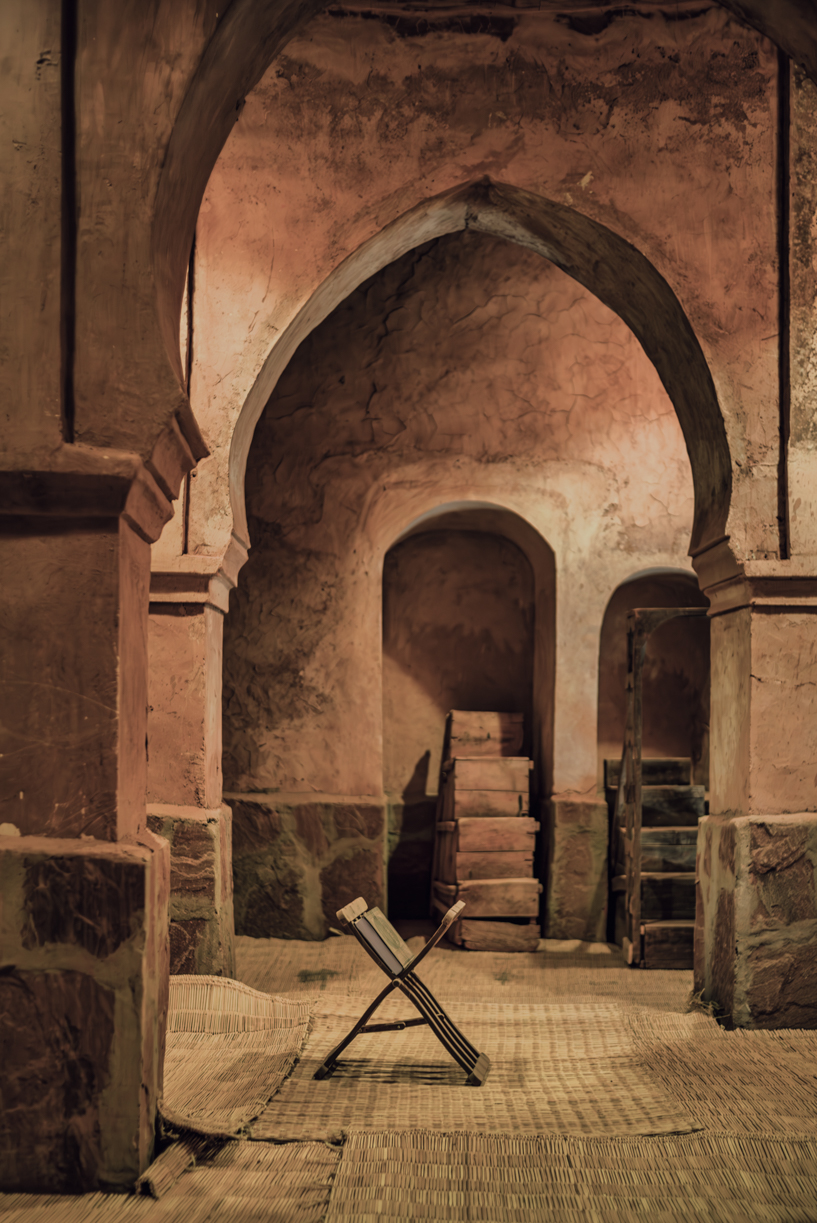
mosque
While a new mosque has been built in Asfalou, the village's old mosque is still standing and can be visited. Its stone walls bear witness to the history of the place, with its prayer room, minaret and ablution area providing an opportunity to immerse yourself in this place of worship.
attics
Around the bend in the lane are the old granaries. This is where the locals used to store barley and other foodstuffs. Although they are empty today, the Riad invites you to visit them to immerse yourself in the life of another era, as this tradition has not withstood the test of time. In the past, the villagers used wood to make all sorts of documents, such as birth certificates, marriage certificates and so on. These "manuscripts" were kept in the village attic.
Although the premises are now equipped with electricity, the very essence of the place has been kept intact in order to recreate as closely as possible the attics as they once existed.


